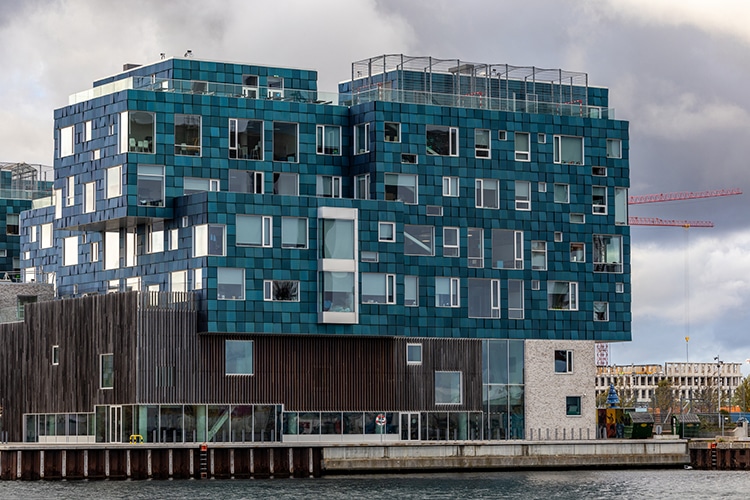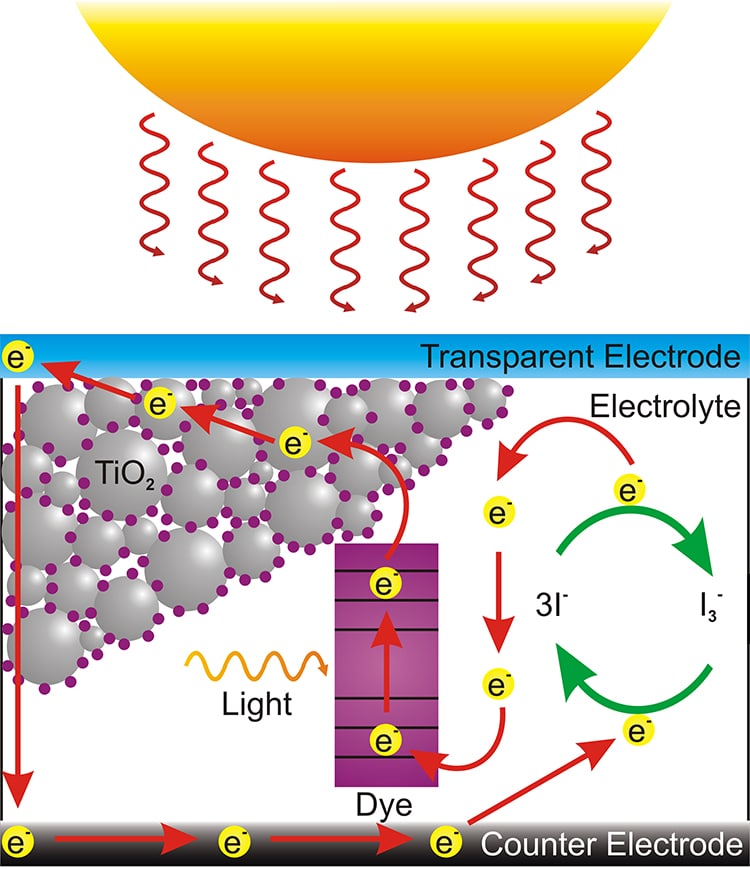The Copenhagen International School building in Denmark, features 12,000 blue-hued but transparent solar panels with DSC technology.
(Photo: ALEXANDER2323/Depositphotos)
Solar energy is the future.
But what about all that sunlight that comes streaming in through our windows?

The Copenhagen International School building in Denmark, features 12,000 blue-hued but transparent solar panels with DSC technology. (Photo: ALEXANDER2323/Depositphotos)
Modern technology can harvest that too.
Gratzel cells, or dye-sensitized solar cells (DSCs), are a modern wonder.
Looking like stained glass, these colorful windows harvest ambient light.

How a dye-sensitized solar cell works. (Photo:Wikimedia Commons, Public domain)
Researchers at the Ecole Polytechnique Federale de Lausanne (EPFL) in Switzerland have set about improving DSC technology.
Standard DSC panels feature a photosensitized dye on a semiconductor.
A chemical reaction transforms the visible light hitting the panel into energy that can be stored in a battery.
These are molecules that are activated by light and that capture light from the entire visible light spectrum.
These panels provide half the energy the school needs.
Improving the technology further like the recent discoveries of the researchers will allow further expansion of the technology.
Their new molecular design allows 30 percent of ambient solar energy to be harvested.
A standard modern solar panel averages 20 percent.
The more efficient, the better a solution DSCs will be for a climate-friendly future.
How a dye-sensitized solar cell works.